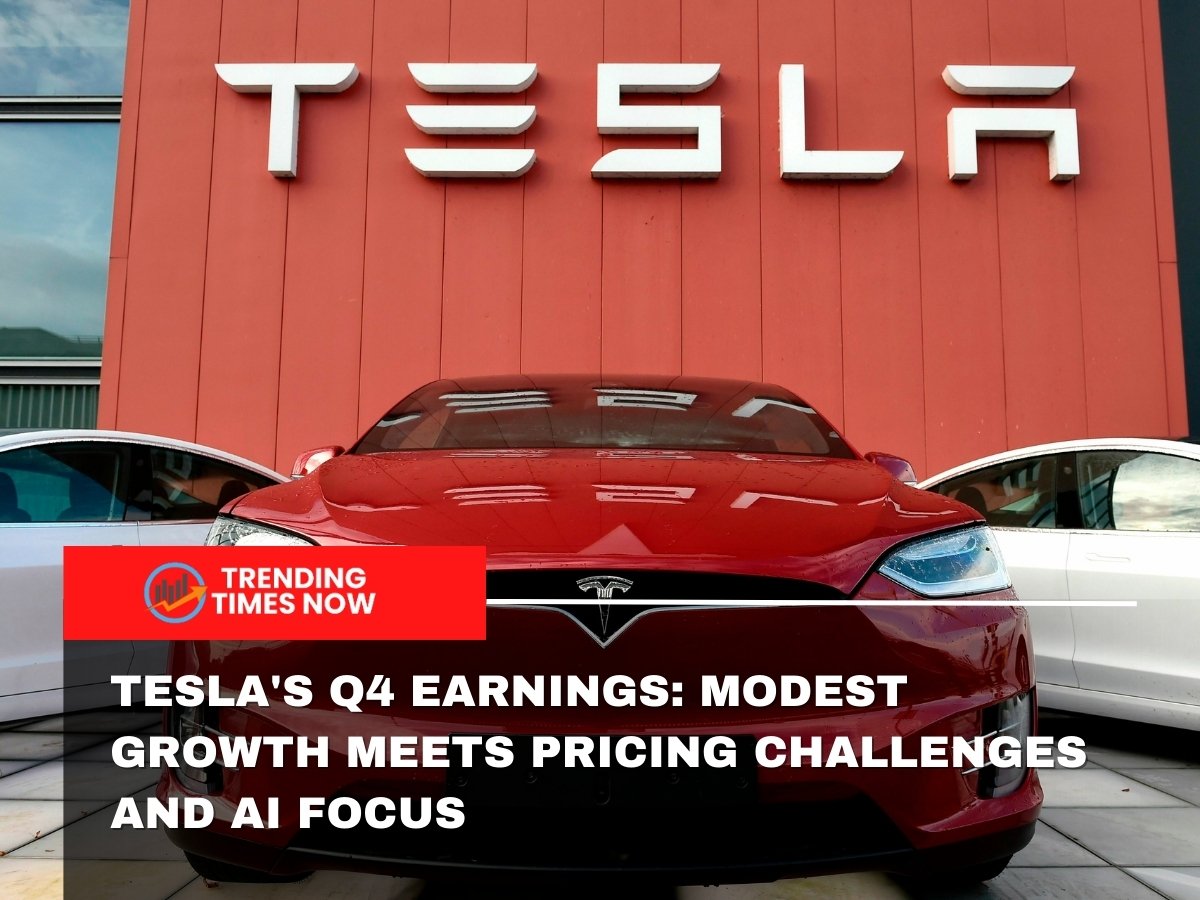Tesla, the renowned electric vehicle manufacturer, recently disclosed its fourth-quarter earnings, revealing a complex picture of growth tempered by challenges. The company reported a slight increase in automotive revenue, but overall, the results fell short of analysts’ expectations.
Key Financial Highlights
- Earnings Per Share: Tesla reported adjusted earnings of 71 cents per share, contrasting with the 74 cents anticipated by analysts.
- Revenue: The total revenue was $25.17 billion, slightly below the expected $25.6 billion.
- Operating Margin: The operating margin stood at 8.2%, a decline from the previous year’s 16%.
Automotive Revenue and Growth Dynamics
Despite a modest 1% year-over-year increase in automotive revenue, Tesla faced challenges due to reduced average selling prices following significant price cuts globally. This strategy, while boosting sales volumes, impacted the overall revenue growth.
Net Income and Tax Benefits
Tesla’s net income more than doubled to $7.9 billion, largely due to a $5.9 billion one-time noncash tax benefit. This significant increase highlights the company’s profitability despite the revenue challenges.
Future Growth Prospects
Tesla cautioned investors about potentially lower vehicle volume growth in 2024 as it gears up for its “next-generation vehicle” launch in Texas. This statement indicates a strategic shift towards long-term growth, focusing on new models and innovations.
Read: Hertz’s Tesla Model 3 Revolution: A New Era in Car Sales and Rentals
Elon Musk’s Vision and Shareholding
CEO Elon Musk discussed his desire to maintain significant control over Tesla, hinting at a possible dual-class share structure to prevent external influences on the company’s direction. This move could have implications for Tesla’s governance and investor relations.
The Optimus Project
Musk emphasized the potential of Tesla’s humanoid robot, Optimus, describing it as a game-changer for the company. He expressed optimism about shipping some units next year, although specifics on capabilities and costs remain unclear.
Cybertruck Rollout
Tesla began delivering Cybertrucks this quarter, projecting a slower ramp-up due to its manufacturing complexity. Musk’s enthusiasm for the Cybertruck as a “head-turner” product underscores its importance in Tesla’s product lineup.
Divisional Performance
- Automotive Revenue: Reached $82.42 billion for the full year, a 15% increase from 2022.
- Energy Division: Showed a 54% revenue increase, highlighting Tesla’s diversification into solar energy and storage systems.
- Services and Other Revenue: Rose by 37%, indicating robust growth in Tesla’s ancillary services.
Operational Challenges
The reduced average sales price of vehicles and increased operating expenses, partly due to AI and R&D projects, led to a decrease in operating income. This reflects the balancing act Tesla faces in innovating while maintaining profitability.
Software Advancements
Tesla rolled out a new version of its Full Self Driving Beta software, continuing its push towards advanced driver assistance systems. However, the technology still requires an attentive driver, underscoring the ongoing development in autonomous driving.
Global Infrastructure
As of the end of 2023, Tesla boasted 54,892 Supercharger connectors, illustrating its commitment to supporting its growing fleet of electric vehicles globally.
Stock Market Reaction
Tesla’s shares have experienced volatility, dropping about 16% this year after a significant rise in 2023. This fluctuation reflects investor reactions to Tesla’s financial performance and future growth prospects.







